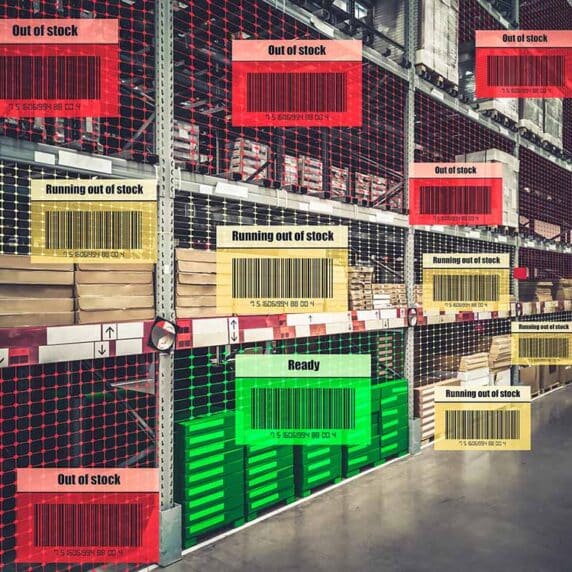Managing Industrial Shortages: AI-Driven Supply Chain Planning
Summary. Managing industrial shortages has become a strategic imperative for manufacturers navigating today’s complex global supply chains. Increasing geopolitical tensions, surging defense spending—especially in Europe—and raw material constraints are driving unprecedented disruptions. This article explores the key factors behind global industrial shortages and demonstrates how AI-powered forecasting, inventory optimization, and intelligent production planning can help manufacturers build resilient, future-ready supply chains. By shifting from reactive responses to proactive, data-driven strategies, businesses can turn supply chain volatility into a competitive advantage.
A Shifting Landscape for Industrial Supply Chains
Managing industrial shortages is now a critical priority for supply chain leaders in manufacturing. The convergence of post-pandemic recovery, geopolitical tensions, and an unprecedented surge in defense spending—particularly across Europe— is placing tremendous pressure on industrial supply chains worldwide. From aerospace parts to critical raw materials, these shortages disrupt production schedules, delay deliveries, and squeeze profit margins.
This article analyzes the root causes behind these supply chain disruptions and outlines practical, AI-driven strategies for managing industrial shortages effectively.
The Roots of Today’s Industrial Shortages
Industrial supply chains face ongoing pressure from a combination of macroeconomic and geopolitical forces. A recent Forbes article highlights how Europe’s rapid defense buildup is consuming large volumes of semiconductors and precision components, causing bottlenecks for commercial manufacturers and extending lead times.
Additionally, a Euronews article reveals a concerning visibility gap in Europe’s industrial ecosystem. Senior defense executives note that fragmented data practices, limited supplier collaboration, and low levels of digitalization hinder effective planning across the supply network.
These structural inefficiencies amplify industrial shortages and highlight the urgent need for innovative, technology-driven supply chain solutions to manage industrial shortages efficiently.
Building Supply Chain Resilience Requires Proactive Planning
Managing industrial shortages demands a proactive, data-driven approach. Supply disruptions are systemic risks that require agile, predictive strategies rather than reactive fixes. Enhancing supply chain visibility across all tiers is the first step toward resilience.
Boston Consulting Group emphasizes integrated planning and cross-functional collaboration to secure reliable, long-term access to critical materials. According to their 2025 report, boosting supply chain resilience means moving from reactive problem-solving to predictive, strategic planning.
This is where advanced planning solutions come into play. By leveraging technologies like AI and machine learning, manufacturers can shift from lagging indicators to real-time and forward-looking insights. Solutions that integrate demand forecasting, inventory optimization, and production planning can transform reactive supply chains into adaptive, intelligent systems.
Turning Disruption into Opportunity: Managing Industrial Shortages
Industrial shortages are more than operational roadblocks—they’re strategic challenges that demand smarter responses. To lead through uncertainty, manufacturers need planning capabilities that bring real-time insight, agility, and control.
Anticipate Demand Before It Hits Operations
When demand swings unexpectedly, the ability to see what’s coming is a game-changer. AI-driven demand forecasting and planning tools enable manufacturers to anticipate market shifts with remarkable accuracy, using machine learning and real-time data to uncover hidden patterns. This empowers teams to act with confidence, reducing stockouts, improving customer satisfaction even amid volatile conditions.
Balance Service Levels Without Excess Inventory
Carrying excess inventory is no longer a safe bet—it’s a liability. Advanced inventory optimization software allows manufacturers to maintain optimal stock levels by dynamically modeling demand variability, service targets, and supply constraints. This minimizes both shortages and excess inventory, enhancing financial performance and operational efficiency.
Align Production with Market Realities
Disruption doesn’t wait for your production schedule to catch up. Intelligent production planning solutions help align manufacturing schedules with current supply and demand constraints, such as capacity limitations and material availability. This leads to faster response times, less downtime, and increased throughput, enabling manufacturers to pivot quickly without sacrificing performance.
Together, these AI-powered capabilities empower manufacturers to convert supply chain volatility into resilience, turning the challenge of managing industrial shortages into a source of competitive advantage.
5 Strategies to Manage Industrial Shortages
To effectively build a future-ready industrial supply chain, manufacturers should adopt the following strategic practices that combine technology, collaboration, and foresight:
1. Improve Multi-Tier Visibility
Utilize digital supply chain tools to gain end-to-end transparency, identify risks early and diversify sourcing by understanding constraints at tier 2 and tier 3 supplier levels.
2. Enhance Scenario Planning
Leverage what-if analysis and scenario simulation tools to evaluate the impact of potential disruptions and prepare contingency plans across different demand and supply conditions.
3. Strengthen Supplier Collaboration
Build closer relationships with strategic suppliers through joint planning and shared data platforms to improve information flow, reduce response times, and enhance network-wide resilience.
4. Align Supply Chain with Business Strategy
Integrate sales, operations, and finance functions to synchronize forecasts and capacity plans, ensuring that supply chain objectives support broader business goals.
5. Invest in Advanced Technologies
Deploy AI, automation, and digital twins to increase agility, minimize manual processes, and enable real-time decision-making throughout the supply chain.
A Turning Point for Industrial Manufacturers
Industrial supply chains are at a critical crossroads. Reliance on outdated tools and disconnected planning processes is unsustainable in an environment marked by persistent shortages driven by defense sector demand, labor constraints, and raw material scarcity.
Managing industrial shortages now requires a shift toward smarter, connected, and Ai-enabled supply chain management strategies.
Managing Industrial Shortages: From Challenge to Competitive Advantage
Managing industrial shortages is no longer just about risk mitigation; it’s about gaining strategic control over supply chain operations. By adopting AI-driven forecasting, inventory optimization, and intelligent production planning, manufacturers can unlock the visibility, responsiveness, and operational efficiency needed to stay ahead of disruption.
With accurate, data-driven insights and agile operations, industrial leaders can turn supply chain complexity into a powerful competitive advantage, building resilience that drives future growth and profitability.







